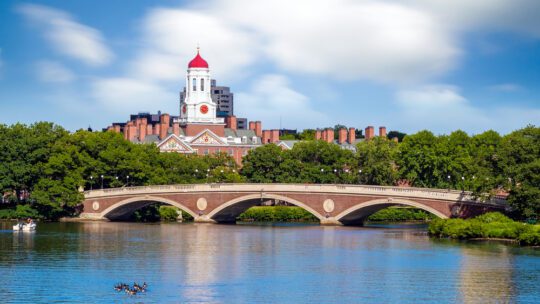
The entire higher education industry took notice when the Supreme Court ruled against affirmative action in college admissions in June 2023. The landmark decision stated colleges and universities could no longer include race as a specific basis for granting admission.
The issue emerged following an investigation into Harvard University and University of North Carolina’s admissions programs, which the Court said violated the Equal Protection Clause by failing to offer so-called “measurable” objectives to justify the use of race.
“Both programs lack sufficiently focused and measurable objectives warranting the use of race, unavoidably employ race in a negative manner, involve racial stereotyping, and lack meaningful end points. We have never permitted admissions programs to work in that way, and we will not do so today,” Chief Justice John Roberts wrote.
The ruling also ignited a debate surrounding legacy admissions, which give the applicant children of alumni preferential consideration. Those arguing for a ban insist that these sorts of policies can create a demographic uniformity among the student populace. Axios recently reported data that revealed “children from ultra-wealthy families [are] 2.9 times more likely to be accepted into Georgetown University compared to others with comparable test scores.”
Of course, numerous stakeholders will be watching to see how higher ed reacts to this—particularly those schools called out. The schools will need to rebuild trust for not only potential students and their families, but alumni, employees and staff of the institutions.
Deliver Words to Regain Trust
In order to regain student trust, colleges need to take steps to ensure that the admissions process is fair and transparent. This includes being more transparent about the factors that are considered in the admissions process, such as grades, test scores and extracurricular activities.
“Transparency is key,” says John Guilfoil, Principal, at John Guilfoil Public Relations. “It's not supposed to be rocket science. How do schools admit students? What criteria and experiences are they looking for? Be up front about it. What kind of student is University X looking for? Tell people the process.”
Joe Stabb, Ph.D., Assistant Professor of Practice, Tombras School of Advertising and Public Relations, The University of Tennessee, Knoxville, agrees, and notes that if there are questions about going public on a policy, that policy should be discussed.
“Historically, most high-rated institutions have not been publicly transparent about those processes.,” Stabb says. “There are a lot of schools that are doing really good stuff and have done good things but nobody talks about admissions processes. It's this big gray area.”
Stabb says university communications platforms should address student questions about why certain items are included in the admissions process.
“Why do we ask for a personal statement?” he offers. “Why did we ask you to fill out this essay question, and where does that lead in the admissions process? How is that evaluated? Being transparent about processes can benefit not only the public that's applying, but also the institution. There's the caveat that if you're concerned about being public, then is that the right policy for your institution?”
Get In Front of Potential Applicants
It’s not only important to provide all of the information, but also to be able to connect with potential applicants.
“A typical student looking to attend college…is probably in that 16-to-18-year-old range,” Stabb says. “That age group really values authentic and personalized communication.”
Guilfoil agrees and says reaching students with your message is simple—go to them.
“Go into large cities and small rural high schools—not with some low-level person either,” he says. “Send your president on a tour of some of these high schools. There is absolutely a disconnect between our so-called top-tier colleges and American society, especially with deeply rural and urban communities.”
Respond to Bad Press
Those schools such as Harvard, Georgetown and others have always had a brand of Ivy-tower luxury. However, that doesn’t mean they get a free pass when it comes to rebuilding trust, especially after being found out for antiquated admissions practices.
Andrew Moyer, Executive VP and GM at Reputation Partners, says he’s already seen great examples of universities trying to turn the corner when it comes to these policies.
“[Harvard] set up a dedicated microsite that includes a well done video from President Claudine Gay—she’s clear on where the university’s values will continue to guide their efforts, but also is realistic that they don’t have all the answers yet,” Moyer says. “This “humble transparency” will go a long way.”
Moyer also notes the work being done by the University of Illinois system.
“The system and chancellors released a joint statement that similarly puts front and center the “shared set of core values” that drive a “commitment to access, equity and inclusion” by highlighting that “our community’s diversity is both vital and cherished,” he says.
And it always helps to have a public figure giving support as well.
“Illinois Governor J.B. Pritzker highlighted other efforts that can target expanded access as a way to still ensure diversity on campus as an example of where institutions could put, more front and center, those programs and resources dedicated to access, which can help with similar goals.”
Moyer also notes restating a continued commitment to diversity as an essential part of all college and university strategy.
“Restate a commitment to diversity and the value it brings to campuses and their learning environments,” he says. “It’s more than just saying it though; [institutions] should focus on concrete actions that demonstrate their commitment(s) to maintain a diverse campus and student body.”
Nicole Schuman is senior editor for PRNEWS. Follow her @buffalogal
